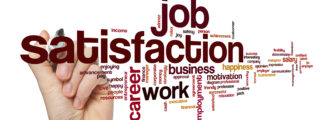
Onboarding Comes Before Training
You have finally found a great new employee. If you’re like a lot of employers, Day 1 is orientation (paperwork, walking around with a supervisor, etc.), and training begins on Day 2.
If that sounds familiar, stop what you’re doing. Though it may feel like you’re spending money on unproductive time, onboarding needs to come ahead of training. What exactly is it?
Tip: Successful onboarding “involves proactively covering The Four C’s—compliance, clarification, culture and connection.”
INTEGRATION PROCESSES
According to the Society for Human Resource Management (SHRM), “Onboarding refers to the processes in which new hires are integrated into the organization. It includes activities that allow new employees to complete an initial new-hire process, as well as learn about the organization and its structure, culture, vision, mission and values.
“For some organizations, the onboarding process consists of one or two days of activities,” explains SHRM. “For other organizations, this process may involve a series of activities spanning one or many months.”
BOTTOM-LINE BENEFITS
Onboarding isn’t just a nice idea. A good outboarding experience results in enhanced performance and superior job satisfaction. According to one Gallup study, 12 percent of employees surveyed consider their onboarding as excellent. Those individuals were three times more likely than other staffers to say that they have the best possible job. For more on the study, go to https://www.gallup.com/workplace/247172/problems-onboarding-program.aspx.
As for retention, a study by the Aberdeen Group found that 86% of new hires decide to stay or leave a company within their first six months of employment. Many report that onboarding has a lot to do with their decision.
WHAT & WHERE
All this sounds great, but where and how do you formulate your own program? Talya Bauer, Ph.D., from the SHRM Foundation, says that successful onboarding “involves proactively covering The Four C’s—compliance, clarification, culture and connection.”
If you’re lucky enough to have a human resources specialist in your practice, that problem is solved. In most practices, however, the individual responsible for HR and, therefore, onboarding, wears several other hats, too.
So, where can you go for help? Touch base with your associations, alliances and buying groups, for sure. In addition to optical-specific programs, check out this list of 10 onboarding programs from Sapling HR, https://www.saplinghr.com/top-employee-onboarding-programs.
What have you tried in your practice? Tell us which programs and approaches have worked and share in the conversation on Facebook here.
Comments are closed.







